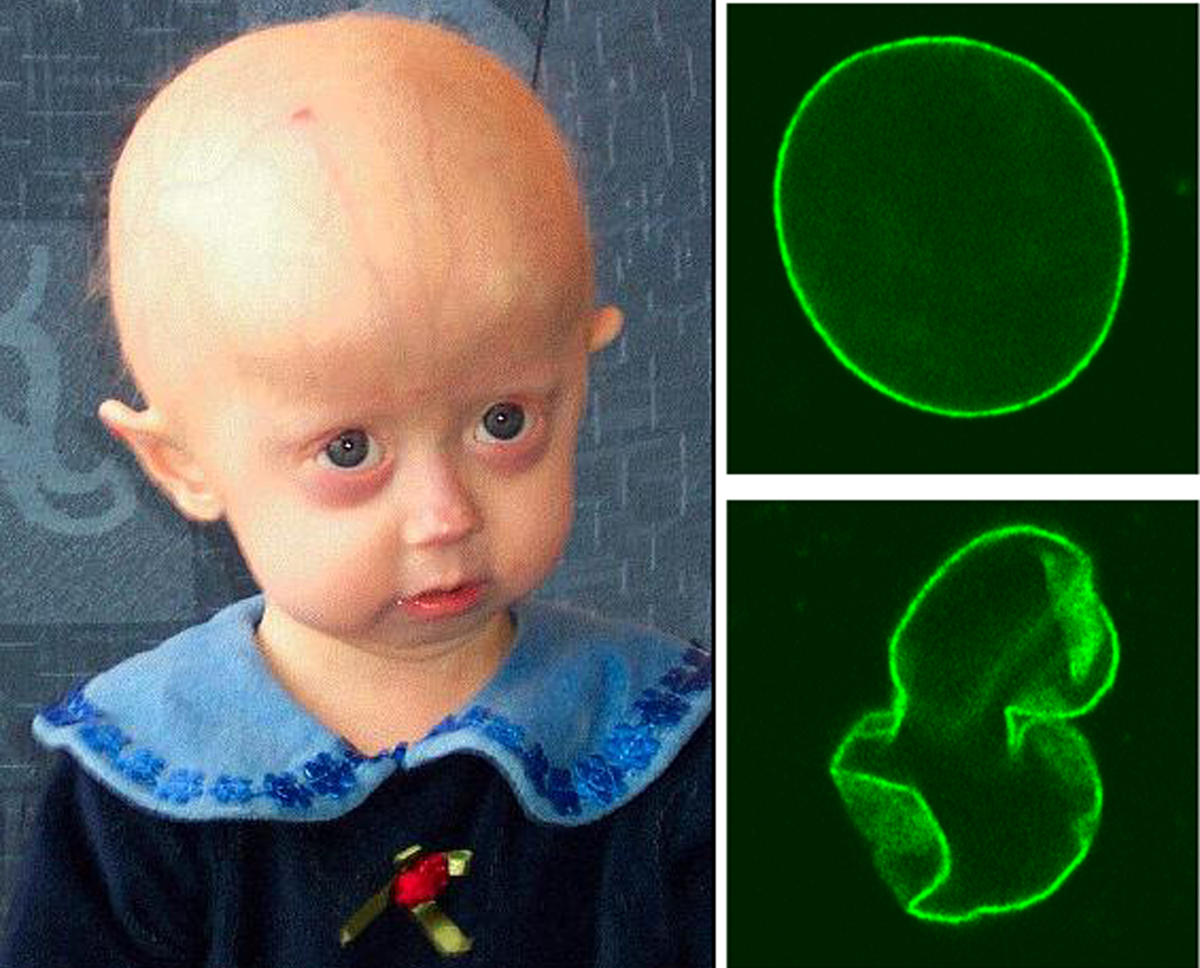Table of Contents
Today, there is unfortunately no available treatment for cure progeria. Nevertheless, children suffering from this disorder follow some medications regimens to decrease the complications associated with the disease, as they might be a cause of premature death (for example, heart attacks as a result of severe coronary atherosclerosis). With that said, children with progeria benefit from coronary artery bypass procedures (surgical operation where a new connection to supply blood to the heart is created by avoiding the coronary arteries affected by atherosclerosis. Aspirin is also given to them as a prophylactic treatment against heart attacks and other ischemic events. Additionally, those children are put under cholesterol – lowering medicationsto decrease their risk of atherosclerosis, hypertension and coronary artery disease.

Rapamicin is an antibiotic (which belongs to the group of macrolides) thought to reduce the physical features (phenotype) of progeria. It is thought to do so by promoting the breakdown of progerin (abnormal proteins) in affected cells, and reducing the level of nuclear damage in those same cells.
Current Research for Future Treatment
In 2012, it was demonstrated (in a clinical trial) that the anticancer drug Lonafarnib is capable of stimulating weight gain in children with progeria.
Prognosis
On average, the life expectancy of children suffering from progeria is 13 years. The most common cause of death in those children is complications from atherosclerotic disease (heart attacks, stroke). This explains why the main goal of therapeutic intervention when dealing with this disease is limiting the symptoms and life-threatening complications. Also, even though these children experience developmental problems, it has been shown (through research and even experience) that their intellect is not affected and they do not present with any kind of mental retardation. Also, their excessive rate of cellular turnover does not predispose them to cancer as others could have believed.
Notable Cases in Popular Culture
See Also: The most common childhood diseases
And we can safely say that because of them, researchers’ interest has been exponentially triggered to discover more about this unfortunate disorder.
One of the most recent cases of progeria (and probably the most known in this generation) is the case of the late Sam Berns, a teenager from Massachusetts who died on January 10th, 2014 (age 17) of the disease. He made several TV appearances which helped to raise public awareness of the disorder. He was known for his courage, undying enthusiasm and for being full of life. In one of his interviews, he proudly declared having had a happy life. Another well-known person suffering from progeria is Hayley Okines, which also helped to raise public awareness regarding this disorder. One of the longest survivor of progeria was the South African hip hop artist Leon Botha who passed away on May 26th, 1985. He was 29 years old. Meg Casey, a spokesperson for the handicapped, also survived this disorder for 26 years.
- Mindmap by steadyhealth.com
- upload.wikimedia.org/wikipedia/commons/6/6e/Hutchinson-Gilford_Progeria_Syndrome.png


Your thoughts on this